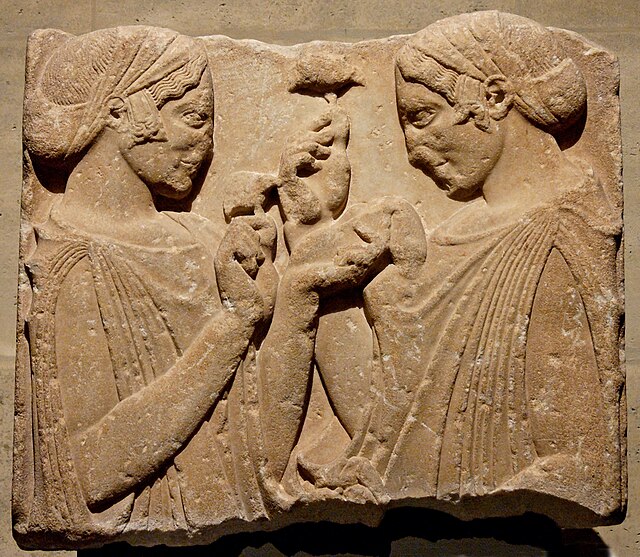An overskirt is a type of women's short skirt which is draped over another garment, such as a skirt, breeches, or trousers. Although peplum is often used as another term for overskirt, it should not be confused with the peplos or "peplum dress", which was worn in ancient Greece.
A woman wearing a tunic-like overskirt and skirt.
A 1950s evening dress showing a short overskirt (or peplum)
A peplos is a body-length garment established as typical attire for women in ancient Greece by c. 500 BC, during the late Archaic and Classical period. It was a long, rectangular cloth with the top edge folded down about halfway, so that what was the top of the rectangle was now draped below the waist, and the bottom of the rectangle was at the ankle. One side of the peplos could be left open, or pinned or sewn together. In Latin and in a Roman context, it could be called a palla.
The Mourning Athena relief with Athena wearing a plain doric overfold chiton, c. 460 BC
So-called "Exaltation de la Fleur" (exaltation of the flower), fragments from a secondary grave stele: two women wearing a peplos and kekryphalos (hairnet), hold poppy or pomegranate flowers, and maybe a small bag of seeds. Parian marble, c. 470–460 BC. From Pharsalos, Thessaly.
The Panathenaea peplos, from the Parthenon frieze
The Peplos Kore, colour reconstruction of statue of c. 530 BC






